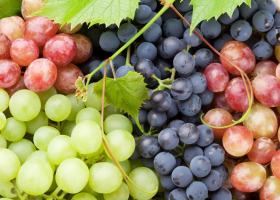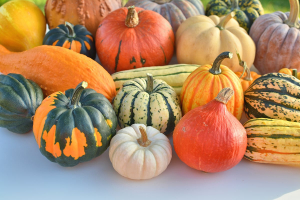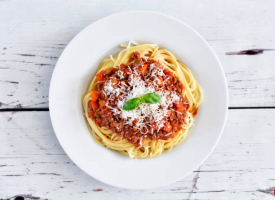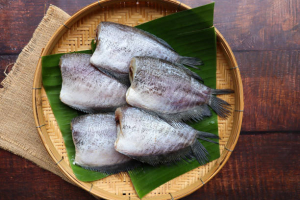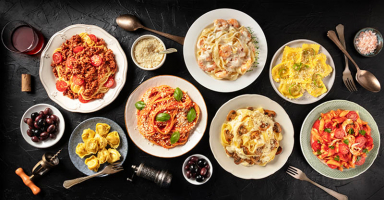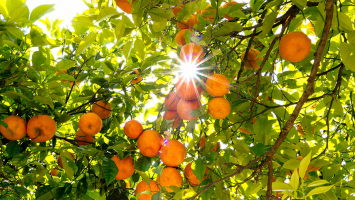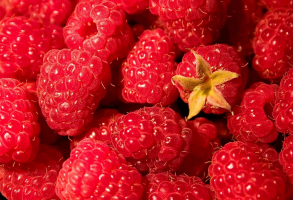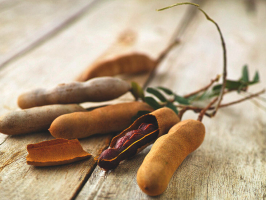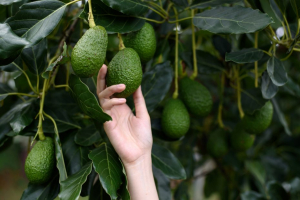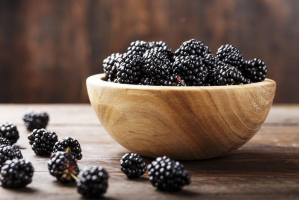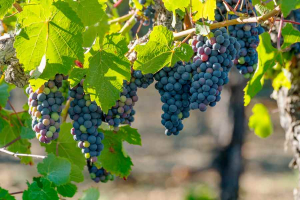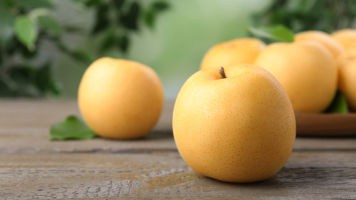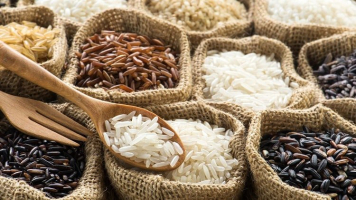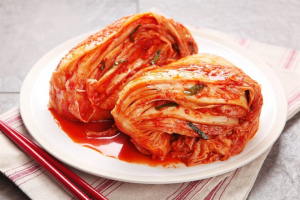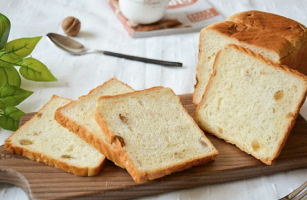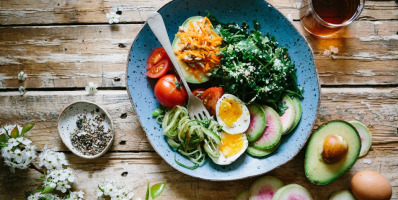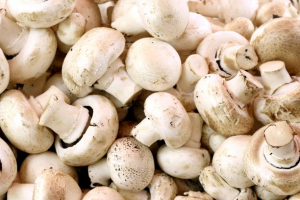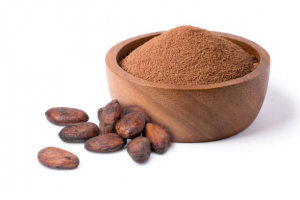Top 10 Most Delicious Types Of Yellow Fruits
Fruits are not only delicious, beautiful, and colorful but also very nutritious for the health of the whole family because they contain a lot of essential ... read more...vitamins and minerals that help fight many chronic diseases. Among them, yellow fruits are tasty and are also packed with healthy vitamins and minerals. Like all fruits, the yellow varieties contain fiber and natural sugars. In addition, the yellow color in fruits comes from lutein and zeaxanthin—carotenoids that are essential antioxidants. Below are the most delicious types of yellow fruits, let's find out!
-
A banana is an elongated, edible fruit – botanically a berry – produced by several kinds of large herbaceous flowering plants in the genus Musa. In some countries, bananas used for cooking may be called "plantains", distinguishing them from dessert bananas. The fruit is variable in size, color, and firmness, but is usually elongated and curved, with soft flesh rich in starch covered with a rind, which may be green, yellow, red, purple, or brown when ripe. The fruits grow upward in clusters near the top of the plant. Almost all modern edible seedless (parthenocarp) bananas come from two wild species – Musa acuminata and Musa balbisiana.
Out of the 1,000 varieties of bananas known to exist, the yellow Cavendish, the smaller apple banana, the baby banana, the red banana with pinkish flesh, and the plantain, which needs to be cooked, are the ones that are most frequently sold. Bananas are abundant in essential amino acids, and significant levels of carbohydrate and fiber, but low in protein and fat. They are also high in potassium and vitamins B6 and C.
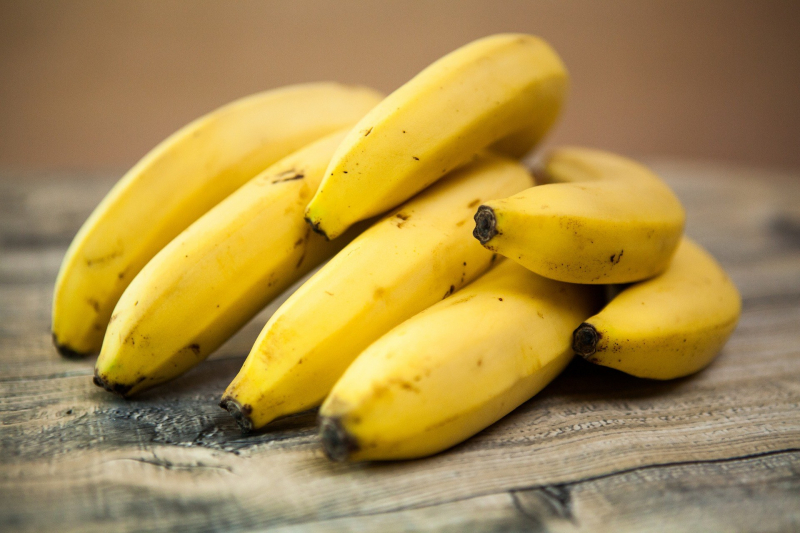
Harvard T.H. Chan School of Public Health 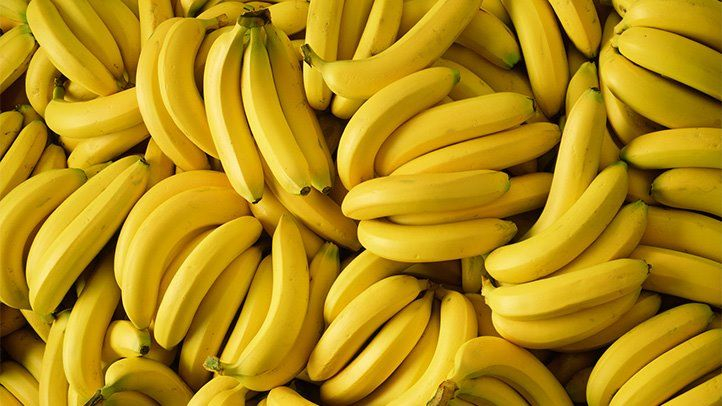
Nippon Express -
The quince is the sole member of the genus Cydonia in the family Rosaceae (which also contains apples and pears, among other fruits). Although it may be successfully grown in latitudes as far north as Scotland, quince is a native of the Hyrcanian forest region, which is located south of the Caspian Sea. It must not be mistaken with its relatives, the Chinese quince, Pseudocydonia Sinensis, or the blooming quinces of the genus Chaenomeles, either of which is occasionally substituted in cooking.
The tree has a 5 to 8 m height and a 4 to 6 m width. The fruit is 60 to 90 mm in diameter and 70 to 120 mm long. Prior to maturing in late fall when the fruit changes color to yellow with thick, strongly fragrant flesh, the immature fruit is green with dense grey-white fine hair, much of which rubs off. The leaves have an entire edge, are alternately arranged, simple, 60-110 mm long, and heavily pubescent with tiny white hairs. The flowers, which appear in the spring after the leaves, are 50 mm across, white or pink, and have five petals. The seeds have nitriles, which are frequently found in the seeds of plants in the rose family. In the stomach, enzymes or stomach acid or both cause some of the nitriles to be hydrolyzed and produce hydrogen cyanide, which is a volatile gas. The seeds are only toxic if eaten in large quantities.
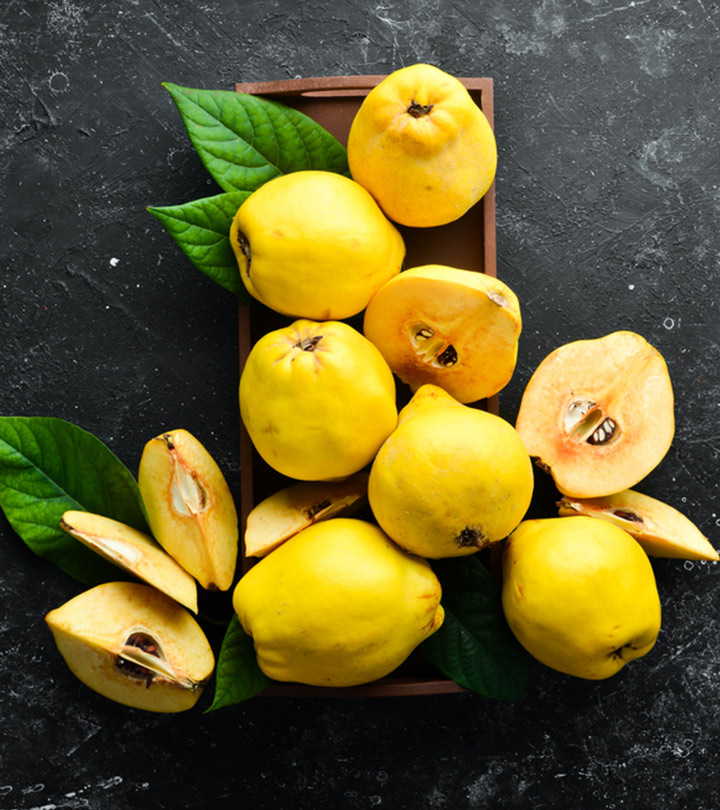
Stylecraze 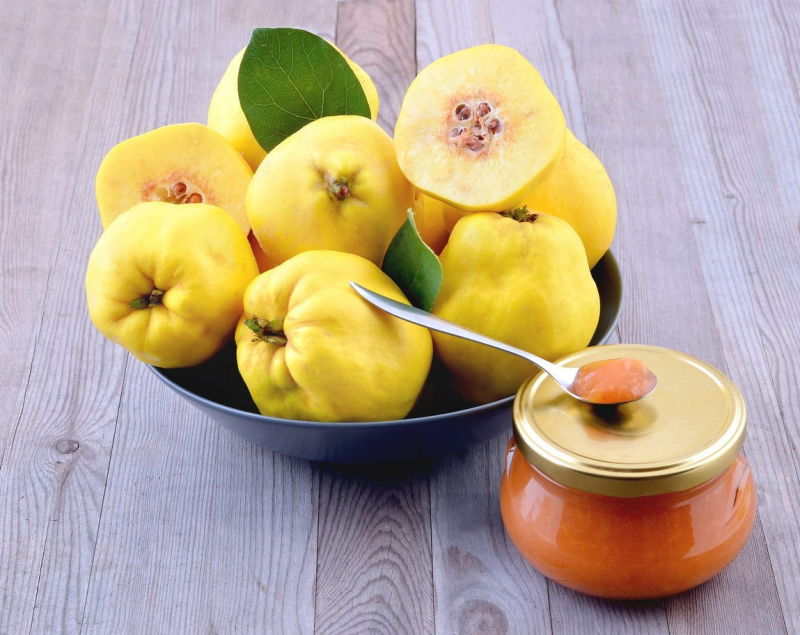
Gardening Know How -
Canary melons, also known as Cucumis melo in the botanical world, are a sweet kind of muskmelon that are members of the Cucurbitaceae family. The specialty melons are grown on three-meter-long vines, and they typically take 80 to 90 days for the fruits to reach maturity. Canary melons are a type of winter melon and are highly prized for their juicy, sweet flesh. Because of their strong rind, canary melons can be preserved for a long time and delivered to markets all over the world. Canary mels are also named after the canary bird, as the rind matches the bird’s signature, bright yellow coloring.
It is a small to medium-sized fruit with an average diameter of 10 to 13 cm. They resemble an American football thanks to their elongated, oval shape and little tapering on both ends. The rind of the melon is hard, thick, semi-smooth, and occasionally covered in brown spots. The flesh is delicious, delicate, tender, and succulent behind the rind and ranges in color from ivory to white with faint green undertones. Canary melons are an excellent source of fiber to regulate the digestive tract and the antioxidant vitamin C to strengthen the immune system, reduce inflammation, and protect the cells against environmental toxins known as free radicals. The melons are also a good source of vitamin A to maintain healthy organ functioning, potassium to balance fluid levels within the body, and contain lower amounts of manganese, iron, calcium, and phosphorus.
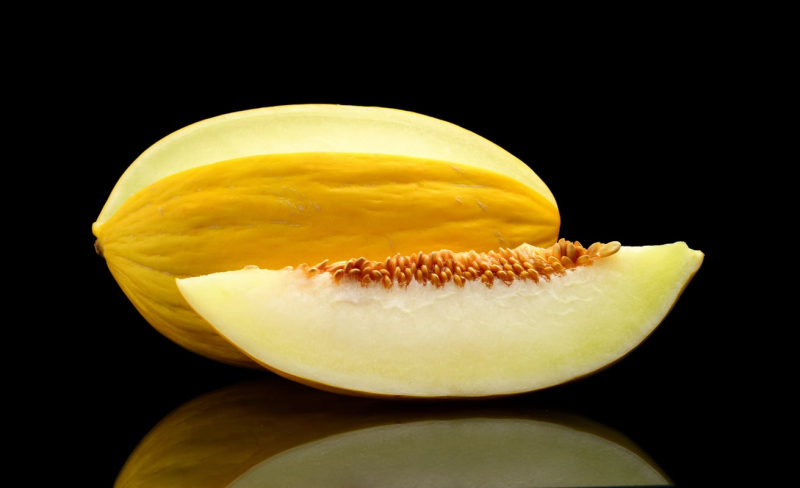
Gardening Know How 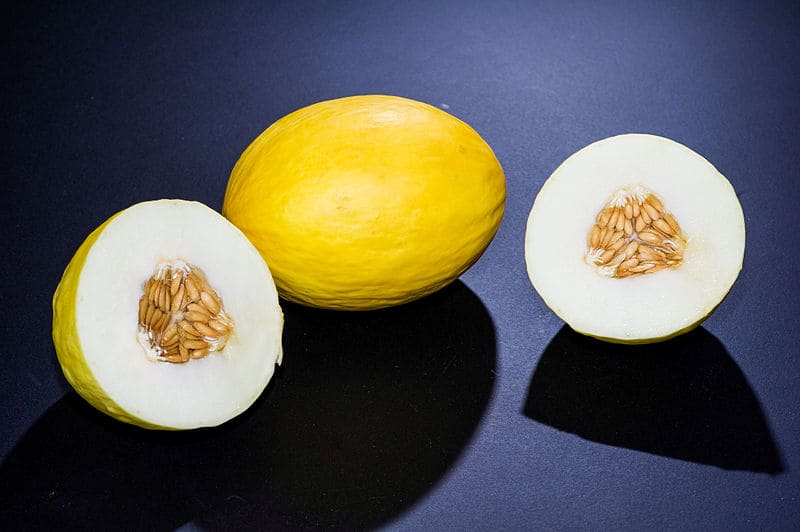
Wikipedia -
Mango is an edible stone fruit produced by the tropical tree Mangifera indica which is believed to have originated in the region between northwestern Myanmar, Bangladesh, and northeastern India. Mango trees thrive in tropical or subtropical climates without risk of frost, particularly in regions where the four summer months (June to September) see an average rainfall of 75 to 250 cm, followed by eight months of dry weather. When the temperature is between 24 and 27 °C with a somewhat cold dry season, the trees grow at their best. Mangos can grow in practically any soil as long as it drains correctly.
The mango tree has a robust trunk, a wide, rounded canopy, and is upright and branching. The tree's leaves are glossy and dark green. They have long petioles, elliptic or lanceolate shapes, and a leathery feel. The tree produces thick panicles of cream-pink blooms with dense clusters of petals. The mango fruit has unevenly shaped, roughly oval sides. A stone is enclosed by an exterior flesh layer in the form of a drupe. The flesh is tender with a brilliant yellow-orange hue. The fruit's skin can range from yellow-green to red. Mango trees can survive for more than 100 years and reach heights of 45 meters (148 feet). Raw mango is 84% water, 15% carbohydrates, 1% protein, and has negligible fat. The energy value per 100 g (3.5 oz) serving of raw mango is 250 kJ (60 calories). Fresh mango contains only vitamin C and folate in significant amounts of the Daily Value of 44% and 11%.
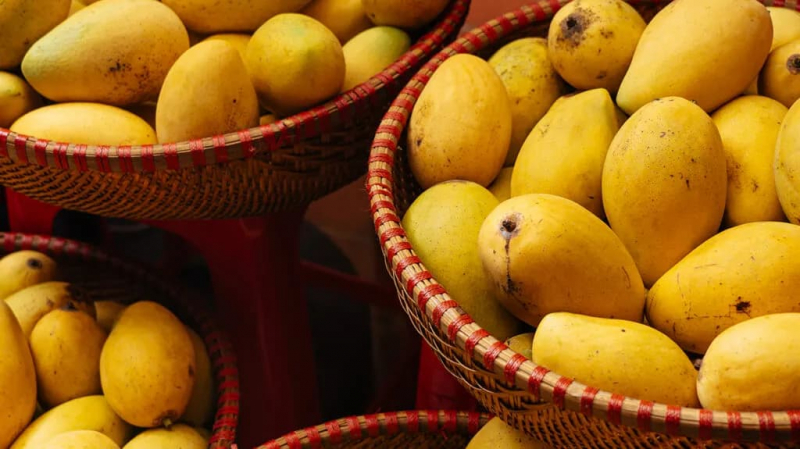
Medical News Today 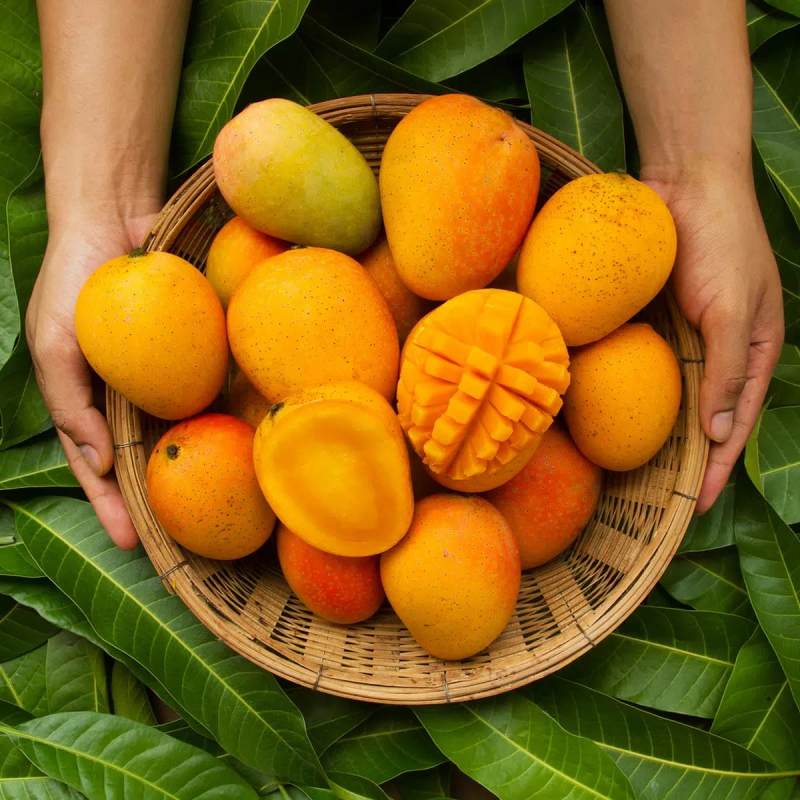
National Today -
The pineapple (Ananas comosus) is a tropical plant with edible fruit; it is the most economically significant plant in the family Bromeliaceae. The pineapple is a native of South America and has been grown there for many years. The pineapple became a prominent cultural symbol of luxury after it was introduced to Europe in the 17th century. Pineapple has been grown for commercial purposes on numerous tropical plantations and in greenhouses since the 1820s.
The height of the pineapple, a perennial herbaceous plant, ranges from 1 to 1.2 meters. It has a 20–25 cm long, short, and thick stem, with meristematic tissues making up the leaf-forming tip. Depending on where they are located inside the plant, the leaves might differ in length and shape. Pineapples have yellow or white pulp, are fleshy, aromatic, juicy, and sweet. In the fruit, there is a fibrous axis that extends from the crown to the pedicle. It has a low-calorie count, making them excellent for weight-loss programs. People with gastritis or dyspepsia can benefit from it because it aids in digestion. It is a fruit that regulates digestive activities and has a mild laxative effect. This fruit stimulates pancreatic activity. It has a lot of manganese, a mineral that is rarely found in other fruits.

Aprifel 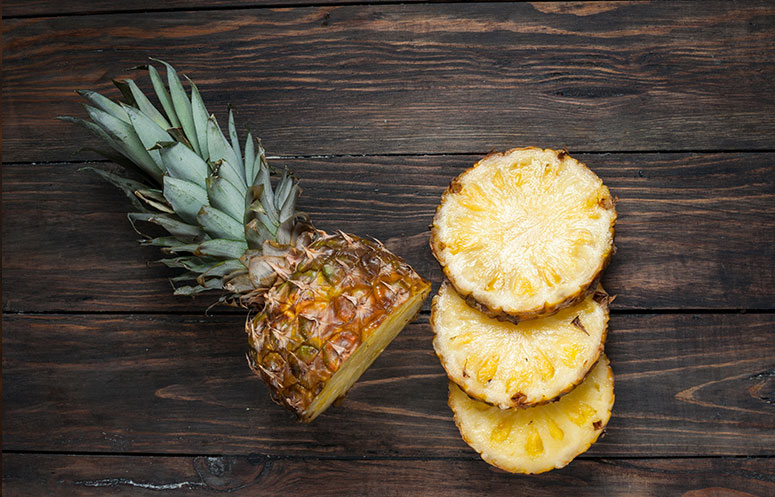
Eckes-Granini Group -
Carambola, also known as star fruit, is the fruit of Averrhoa carambola, a species of tree native to tropical Southeast Asia. The mildly poisonous fruit is commonly consumed in parts of Brazil, Southeast Asia, South Asia, the South Pacific, Micronesia, parts of East Asia, the United States, and the Caribbean and contains the neurotoxin caramboxin. The tree is cultivated throughout tropical areas of the world.
When ripe, the spectacular fruits have an orange-yellow exterior, crisp, juice-filled yellow flesh, and a thin, waxy pericarp. The fruit has an oval form and measures 5 to 15 cm in length. There are typically five or six noticeable longitudinal ridges. It has a star-like cross-section. The flesh is transparent and varies in hue from pale yellow to yellow. Each fruit may contain 10 to 12 flat, light brown seeds that are covered in a gelatinous aril and measure 5 to 15 mm in width. Raw carambola is 91% water, 7% carbohydrates, 1% protein, and has negligible fat (table). A 100-gram reference amount of raw fruit supplies 128 kilojoules (31 kilocalories) of food energy and rich content of vitamin C (41% of the Daily Value).
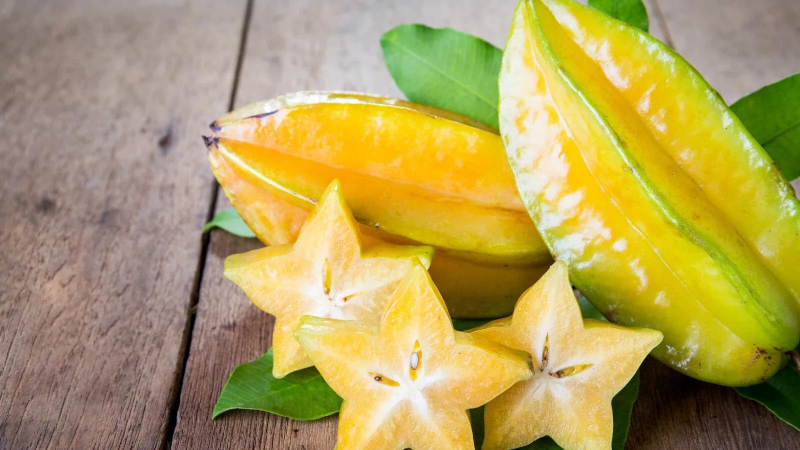
iStock 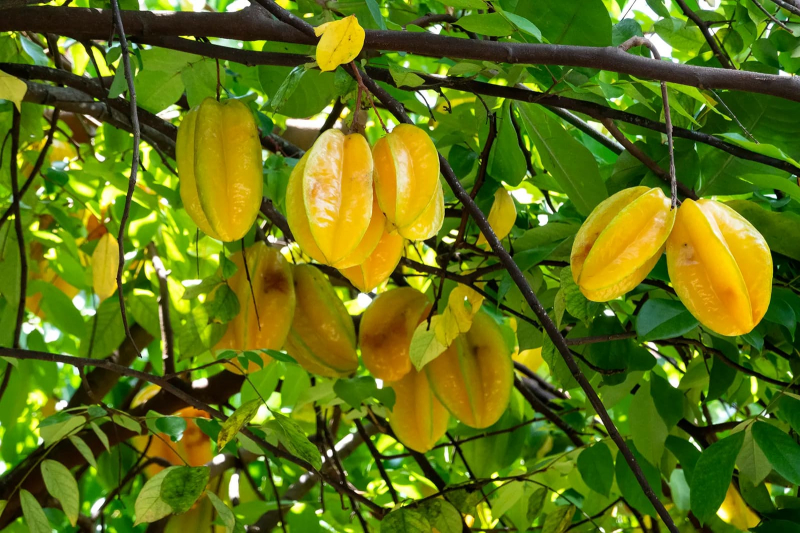
Encyclopedia Britannica -
The durian is the edible fruit of several tree species belonging to the genus Durio. There are 30 recognized Durio species, at least nine of which produce edible fruit. Durio zibethinus, native to Borneo and Sumatra, is the only species available in the international market. As of 1987, there were approximately 300 named kinds in Thailand and 100 in Malaysia. Other species are offered for sale in such areas. Southeast Asian cuisine, particularly that of Indonesia, Malaysia, Singapore, Thailand, Cambodia, and Vietnam, is frequently linked with durians.
The durian, known in certain places as the "king of fruits", is characterized by its enormous size, potent aroma, and rind covered in thorns. The fruit normally weighs between 1 and 3 kilos and can reach sizes of up to 30 centimeters (12 inches) in length and 15 centimeters in diameter. Depending on the species, its shape can range from oblong to circular, its husk can be green or brown, and its flesh can be pale yellow or red. Durian is a very nutritious fruit that’s rich in fiber, B vitamins, vitamin C, and various healthy plant compounds.
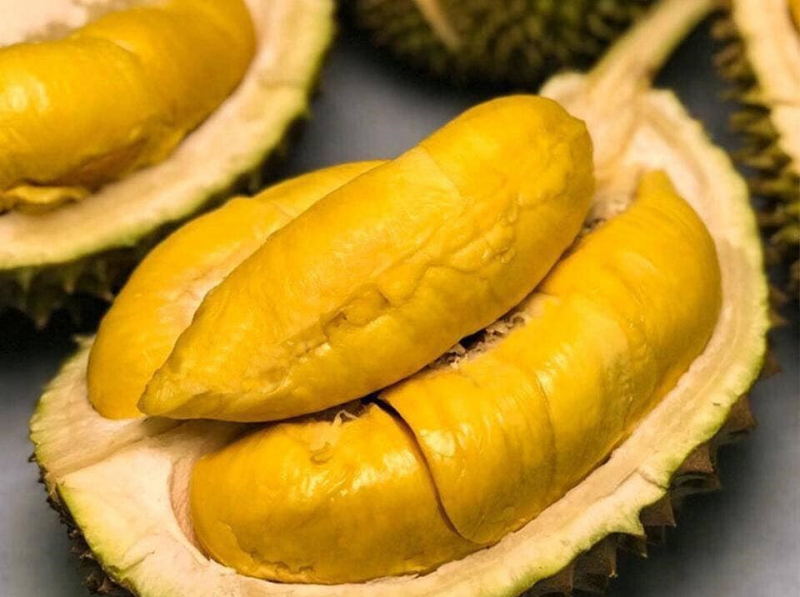
VietnamOnline.com 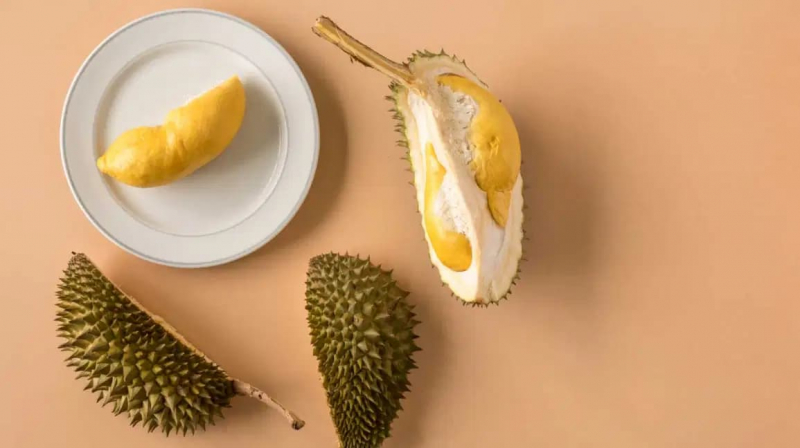
Healthline -
Yuzu is an East Asian citrus fruit and plant belonging to the Rutaceae family. Typically, winter is when it's accessible. It is relatively uncommon and only 27000 tons are produced a year, with Kochi prefecture producing most of it. This fruit looks like a small grapefruit with uneven skin and a yellow or green tinge, though its color varies depending on how ripe it is. Yuzu fruits normally have a diameter between 5.5 and 7.5 cm and are quite fragrant, though they can be as large as a regular grapefruit.
Yuzu forms an upright shrub or small tree, which commonly has many large thorns. Leaves are notable for a large, leaf-like petiole, resembling those of the related kaffir lime and ichang papeda, and are heavily scented. Many characteristics of yuzu are similar to those of sudachi, but unlike sudachi, yuzu finally ripens to an orange color, and the flavors of the fruit change just slightly from one another.
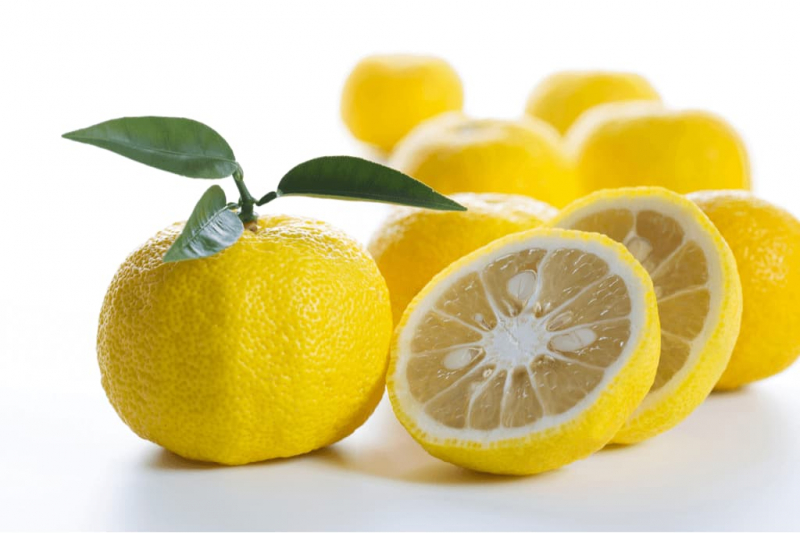
TokyoTreat 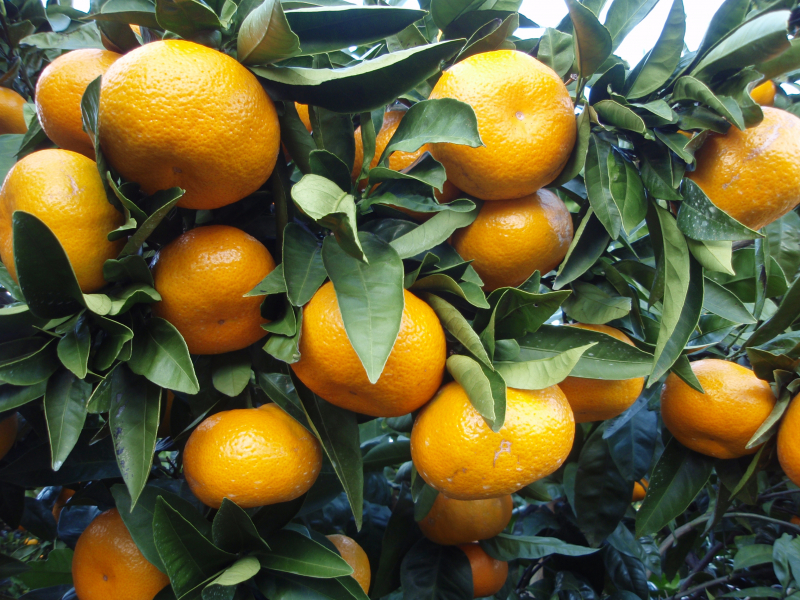
Healthline -
The loquat (Eriobotrya japonica) is a large evergreen shrub or tree, grown commercially for its orange fruit and for its leaves, which are used to make herbal tea. It is also cultivated as an ornamental plant. The tree can reach a height of 5–10 meters, however, it typically grows to be just 3–4 meters tall. Depending on the local temperature, the fruit starts to ripen in the spring through summer. The leaves are thickly velvety-hairy below and thick yellow-brown pubescence on the upper surface; the young leaves are also densely pubescent above, but this soon rubs off. The leaves are alternate, simple, 10-25 centimeters long, dark green, tough, and leathery in texture, with a serrated margin. The loquat is low in sodium and high in vitamin A, vitamin B6, dietary fiber, potassium, and manganese.
Asia has almost 800 different varieties of loquat. The cultivars "Gold Nugget" and "Mogi" are self-fertile varieties. The loquat is a simple plant to grow in subtropical to mild temperate regions. It is frequently planted first as an ornamental plant, particularly for its sweet-scented blossoms, and secondarily for its delectable fruit. The strikingly textured foliage gives gardens a tropical feel and contrasts well with a variety of other plants.
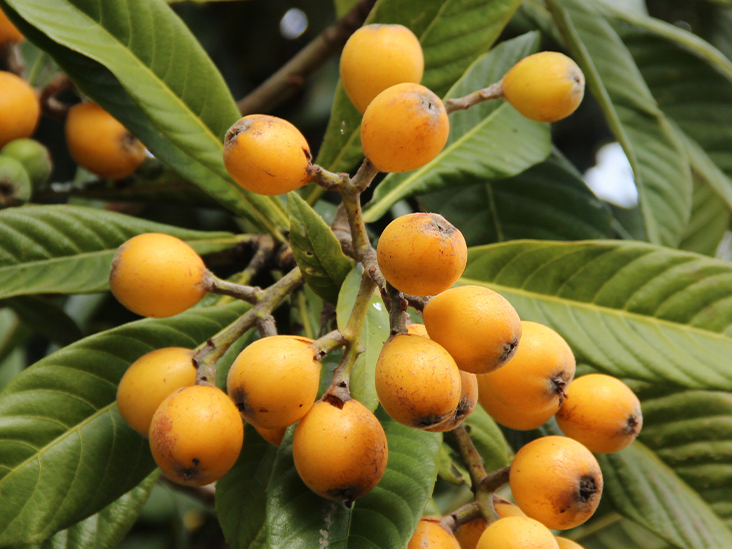
Healthline 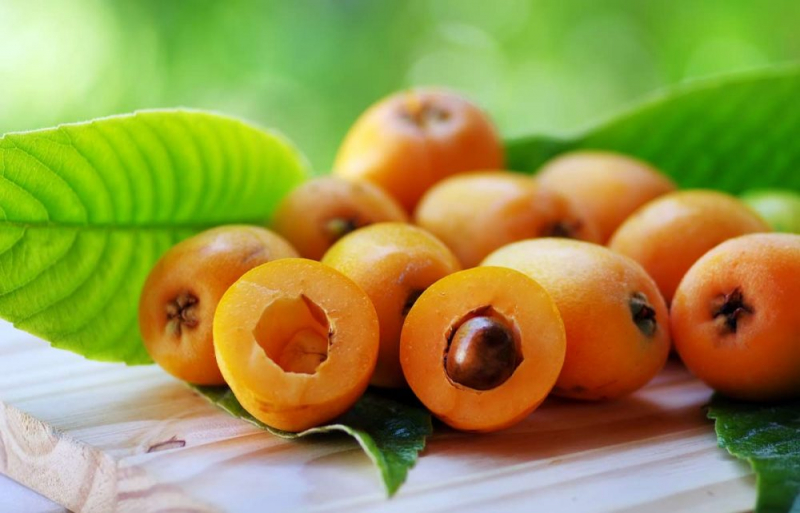
Healthline -
Golden raspberries are a naturally occurring red raspberry variation that has an exceptional pale yellow to orange-gold hue and a more sweet, mild flavor. These berries are different from regular raspberries in certain ways, thus they are typically sold as a specialty item and frequently fetch a premium price as a result. They often come into season for a short time in the fall and are then available in the middle of the summer. Golden raspberries are frequently available at farmers' markets and large supermarkets. For gardeners with the space, it is also possible to grow golden raspberry canes indoors.
All raspberries are grown on thorny canes that, given proper care, will produce an abundance of fruit. As long as the canes are clipped and split to encourage growth, raspberries will continue to bear fruit year after year. Since raspberries have a robust, powerful flavor and can be utilized in a variety of cuisines, many consumers really appreciate them. Raspberries are a delicious fruit that may even be consumed raw. They are also highly healthful. The term “Golden Raspberry” is also used to refer to a satirical movie award, given out to a truly awful film. The “Razzies”, as they are called, dates back to 1981, when John Wilson decided that it was time to publicly recognize atrocious filmmaking.
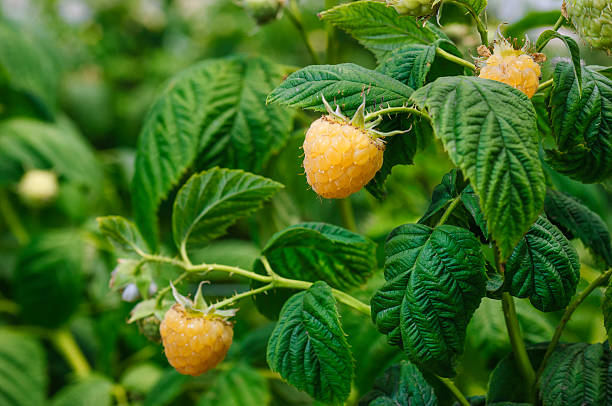
iStock 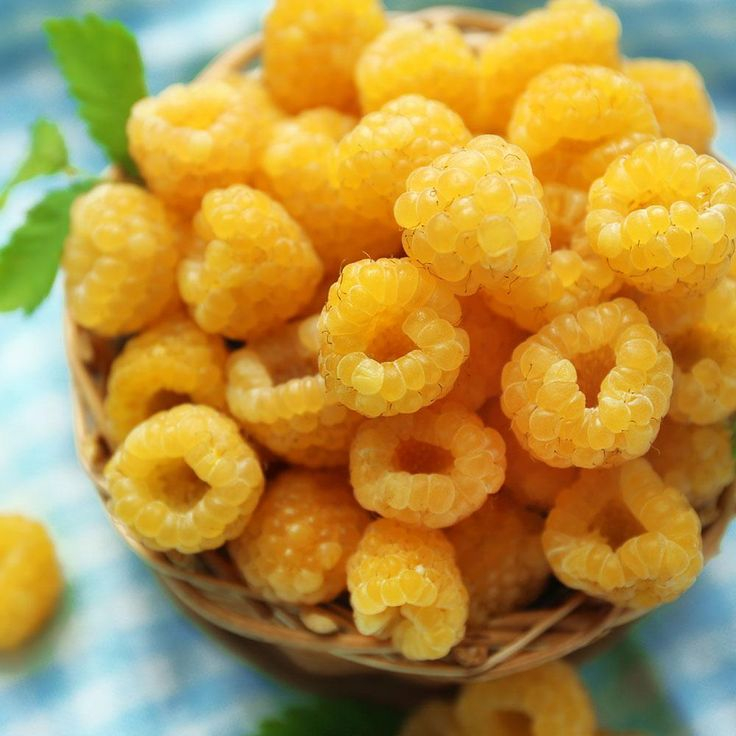
Pinterest












